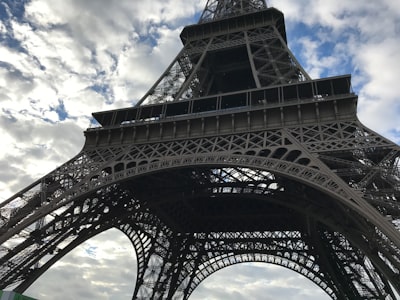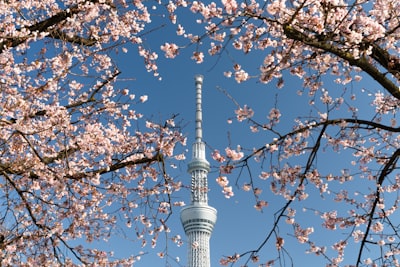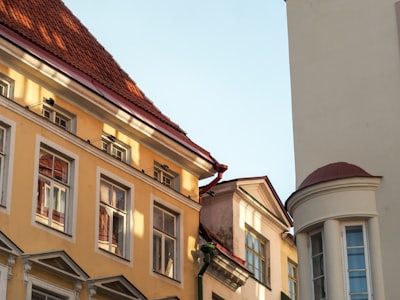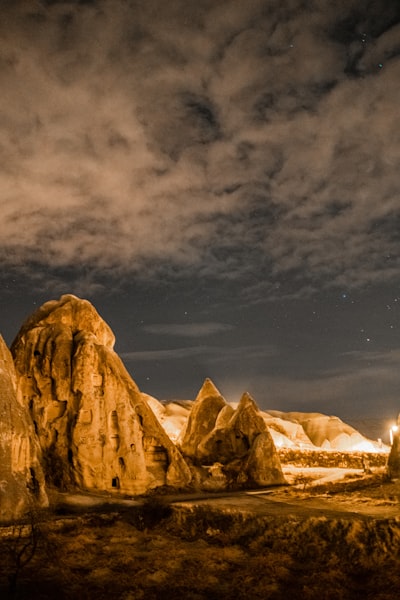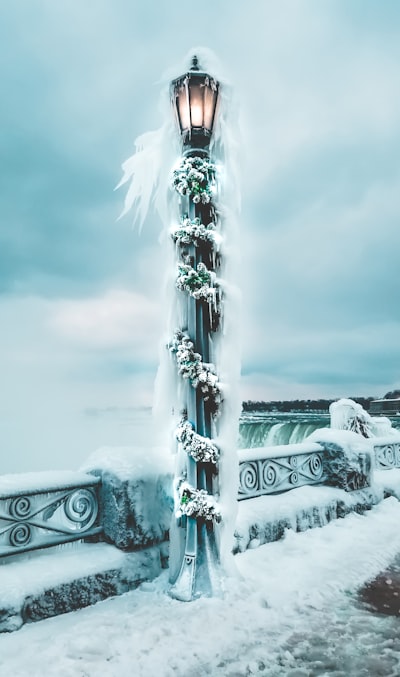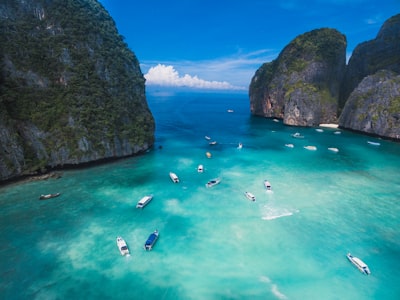The Fairy Pools The Fairy Pools are a series of crystal-clear, turquoise-colored pools and waterfalls located at the foot of the Black Cuillins mountains. Visitors can take a leisurely hike along the banks of the pools, admiring the breathtaking scenery and the opportunity to spot local wildlife such as deer, otters, and a variety of bird species. Coire Lagan Coire Lagan is a dramatic glacial valley located just a short hike from the Fairy Pools. The valley offers stunning views of the surrounding mountains and is a popular destination for hikers and climbers. The area is also home to a number of smaller waterfalls and pools, providing ample opportunities for exploration and photography. Talisker Bay Talisker Bay is a beautiful sandy beach located just a few miles from the Fairy Pools. The bay is known for its dramatic cliffs, sea stacks, and the opportunity to spot seals, dolphins, and other marine life. Visitors can also explore the nearby Talisker Distillery, which offers tours and tastings of its renowned single malt whisky. Dunvegan Castle Dunvegan Castle is the ancestral home of the Clan MacLeod and is one of the oldest continuously inhabited castles in Scotland. The castle and its grounds offer a glimpse into the region's rich history and culture, with guided tours, gardens, and a museum showcasing the clan's artifacts and treasures. The Quiraing The Quiraing is a stunning natural landscape located on the Trotternish peninsula, just a short drive from the Fairy Pools. The area is known for its dramatic rock formations, including towering cliffs, pinnacles, and landslips, and offers breathtaking views of the surrounding countryside. The Old Man of Storr The Old Man of Storr is a iconic rock formation located on the Trotternish peninsula, just a short hike from the Fairy Pools. The formation, which resembles a giant, weathered figure, is a popular destination for hikers and photographers, offering stunning views of the surrounding landscape. Neist Point Lighthouse Neist Point Lighthouse is a historic lighthouse located on the westernmost point of the Isle of Skye. Visitors can hike to the lighthouse and enjoy panoramic views of the coastline, as well as the opportunity to spot seabirds and other marine life. Whether you're a nature lover, a history buff, or simply seeking breathtaking scenery, the Fairy Pools and the surrounding area of the Isle of Skye offer a wealth of must-see attractions that are sure to leave a lasting impression.
Choquequirao Ruins: The main draw of Choquequirao is the impressive Inca ruins that sit atop a mountain ridge. Explore the well-preserved stone structures, plazas, and terraces that offer stunning views of the surrounding Vilcabamba mountain range. Marvel at the intricate stonework and imagine the bustling city that once occupied this remote location. Inca Terraces: Descend the steep stone staircases to discover the extensive agricultural terraces built by the Incas. These terraces were used for growing crops and showcase the Inca's advanced engineering and farming techniques. Wander through the terraces and imagine the vibrant community that once thrived in this high-altitude environment. Inti Watana: One of the most significant structures in Choquequirao is the Inti Watana, a ritual stone platform believed to have been used for astronomical observations and ceremonies. Stand in awe of this impressive stone monument and try to envision the important role it played in Inca culture and religious practices. Llama Corrals: Explore the well-preserved llama corrals, where the Incas housed and cared for these essential pack animals. Observe the intricate stone walls and imagine the bustling activity of the Inca caravans that would have passed through this remote outpost. Choquequirao Museum: Visit the on-site museum to learn more about the history, archaeology, and cultural significance of Choquequirao. Admire the artifacts, pottery, and textiles on display, which offer a glimpse into the daily life and traditions of the Inca people who once inhabited this site. Mirador Views: Hike to the various viewpoints and lookout points around Choquequirao to take in the breathtaking vistas of the surrounding Andes Mountains. Marvel at the sweeping panoramas of snow-capped peaks, deep valleys, and the winding Apurimac River below. Inca Trail Hike: For the adventurous traveler, consider hiking the Inca Trail from Choquequirao to the famous Machu Picchu. This challenging multi-day trek will take you through stunning Andean landscapes, past remote Inca ruins, and offer the opportunity to experience the legendary Inca Trail firsthand. Apurimac River Gorge: Descend into the deep Apurimac River gorge, which offers a unique perspective of the Choquequirao site and the surrounding natural beauty. Observe the powerful river cutting through the rugged terrain and keep an eye out for the diverse wildlife that inhabits this remote canyon. Andean Flora and Fauna: Explore the diverse Andean ecosystems surrounding Choquequirao, which are home to a wide variety of plant and animal life. Spot colorful birds, such as the Andean Condor, as well as other wildlife like the elusive Spectacled Bear. Local Culture: Engage with the local communities in the villages near Choquequirao to learn about their traditional way of life, customs, and connection to the Inca heritage. Visit local markets, try traditional Andean cuisine, and immerse yourself in the rich cultural tapestry of the region. Trekking and Hiking: Beyond the Choquequirao site, the surrounding Andes Mountains offer ample opportunities for trekking and hiking. Embark on day hikes or multi-day treks to explore remote valleys, glacial lakes, and other Inca ruins hidden in the rugged landscape. Stargazing: With its high-altitude location and minimal light pollution, Choquequirao offers exceptional stargazing opportunities. Gaze up at the vast, twinkling night sky and marvel at the clarity of the Milky Way and other celestial wonders. In conclusion, Choquequirao is a truly remarkable and awe-inspiring destination that offers a unique glimpse into the Inca civilization and the stunning natural beauty of the Andes Mountains. Whether you're exploring the well-preserved ruins, immersing yourself in the local culture, or embarking on adventurous treks, Choquequirao is a must-visit destination for any traveler to Peru.
The Inca Trail to the top of Huayna Picchu is a challenging hike that takes approximately 2-3 hours to complete, but the panoramic vistas from the summit are well worth the effort. Along the way, hikers can explore the Temple of the Moon, a sacred Inca site located on the northern slope of the mountain. Another must-see attraction in the Machu Picchu area is the Inca Bridge, a narrow stone path that was once used as a secret entrance to the citadel. The bridge, which is perched precariously on the edge of a cliff, offers stunning views of the surrounding mountains and the Urubamba River below. For those seeking a more leisurely experience, the Machu Picchu Citadel itself is a captivating destination, with its well-preserved Inca ruins, terraced gardens, and the iconic Huayna Picchu in the background. Visitors can explore the various temples, plazas, and residential areas, and learn about the rich history and culture of the Inca civilization. In addition to the main attractions, the Machu Picchu area is home to a variety of other natural wonders, including the Inca Trail, the Inca Quarry, and the Inca Drawbridge. These sites offer opportunities for hiking, exploration, and a deeper understanding of the Inca's engineering and architectural achievements.
Machu Picchu The crown jewel of the Inca Trail, Machu Picchu is a UNESCO World Heritage Site and one of the New Seven Wonders of the World. This ancient Inca citadel, perched high in the Andes Mountains, offers stunning vistas of snow-capped peaks, lush valleys, and the winding Urubamba River. Visitors can explore the well-preserved ruins, including the Temple of the Sun, the Intihuatana Stone, and the iconic terraced structures. Inti Punku (Sun Gate) The Inti Punku, or Sun Gate, is the final checkpoint on the Inca Trail and the first glimpse of Machu Picchu for hikers. This ancient stone gateway offers a breathtaking panoramic view of the entire Machu Picchu complex, making it a must-visit spot for any Inca Trail trekker. Huayna Picchu Towering above Machu Picchu, Huayna Picchu is a steep, iconic mountain that offers stunning views of the ancient city and the surrounding landscape. The hike to the top of Huayna Picchu is challenging but rewarding, with opportunities to explore Inca ruins and terraces along the way. Inca Bridge The Inca Bridge is a remarkable engineering feat, built into the side of a cliff along the Inca Trail. This narrow, stone bridge was once used as a secret entrance to Machu Picchu, and it offers a unique and thrilling experience for hikers. Winay Wayna Winay Wayna is an Inca archaeological site located along the Inca Trail, just a few hours' hike from Machu Picchu. This well-preserved site features terraced agricultural gardens, ceremonial baths, and the remains of residential structures, providing a glimpse into the daily life of the Inca people. Runkurakay Runkurakay is an Inca ruin located at an elevation of over 12,500 feet, about halfway along the Inca Trail. This small, circular structure was likely used as a tambo, or way station, for Inca travelers and messengers. The site offers stunning views of the surrounding mountains and valleys. Sayacmarca Sayacmarca is an Inca archaeological site located on a steep, rocky outcrop along the Inca Trail. This well-preserved site features impressive stone structures, including a series of terraces, plazas, and residential buildings, and offers panoramic views of the surrounding landscape. Phuyupatamarca Phuyupatamarca, also known as the "Town Above the Clouds," is an Inca ruin located at an elevation of over 12,000 feet. This site features a series of stone structures, including a complex of baths and ceremonial platforms, and offers breathtaking views of the Andes Mountains and the Urubamba River. Intipata Intipata is an Inca agricultural terracing site located along the Inca Trail, just a short distance from Machu Picchu. This well-preserved site offers a glimpse into the Inca's sophisticated agricultural practices and the impressive engineering feats they accomplished in the rugged Andes Mountains. Wiñay Wayna Wiñay Wayna is an Inca archaeological site located just a few hours' hike from Machu Picchu. This site features a series of terraced agricultural gardens, ceremonial baths, and residential structures, providing a fascinating glimpse into the daily life of the Inca people.
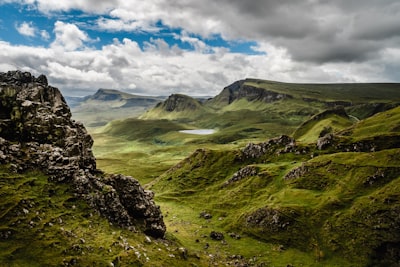

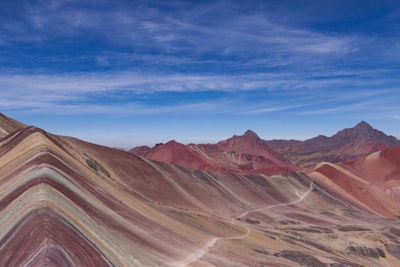
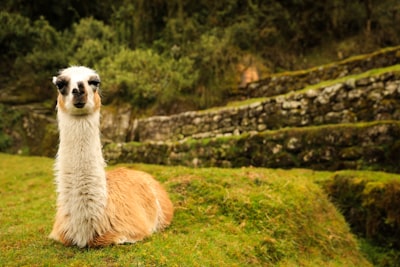
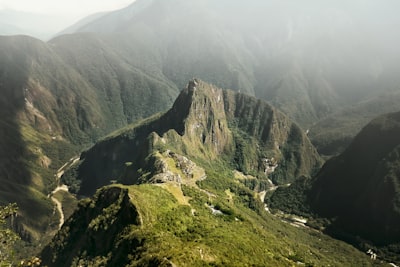
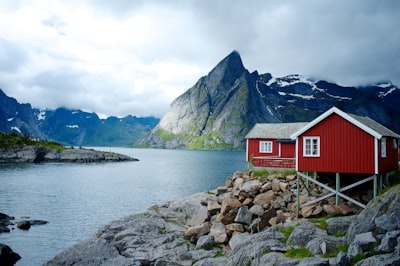
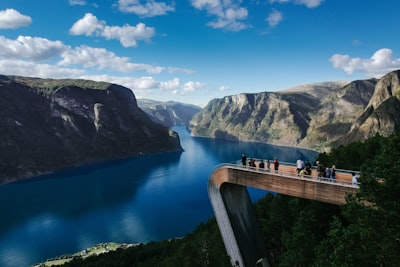
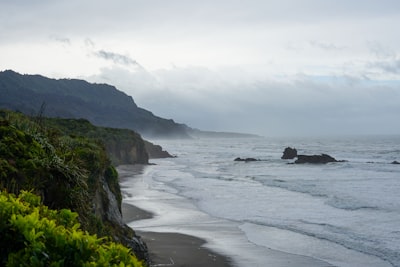
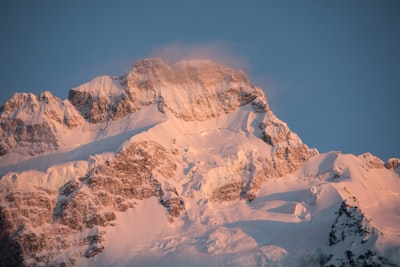
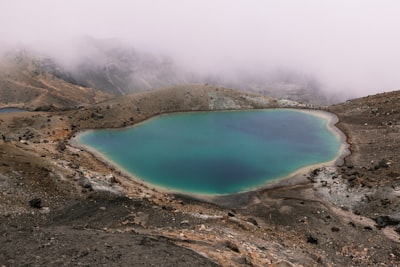
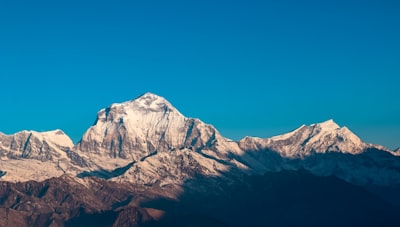
Besi Sahar: The starting point of the Annapurna Circuit, Besi Sahar is a bustling town that serves as the gateway to the Annapurna region. Visitors can explore the local markets, interact with the friendly locals, and prepare for the upcoming trek. Lamjung Himal: As you ascend the circuit, you'll be treated to stunning views of the Lamjung Himal, a majestic mountain range that includes several peaks over 7,000 meters. The views of these snow-capped giants are truly awe-inspiring. Manang: The picturesque village of Manang is a highlight of the Annapurna Circuit. Nestled at an altitude of around 3,500 meters, Manang offers a glimpse into the traditional Tibetan-influenced culture of the region. Visitors can explore the ancient monasteries, visit the local market, and acclimatize to the high altitude. Thorong La Pass: The Thorong La Pass, at an elevation of 5,416 meters, is the highest point of the Annapurna Circuit. The crossing of this pass is a challenging but rewarding experience, offering panoramic views of the surrounding peaks and glaciers. Muktinath: Muktinath is a sacred site for both Hindus and Buddhists, known for its 108 stone spouts that pour forth natural spring water. Visitors can explore the ancient temples and shrines, and experience the spiritual significance of this revered location. Marpha: The charming village of Marpha is renowned for its apple orchards and production of apple brandy. Visitors can stroll through the picturesque streets, sample the local delicacies, and immerse themselves in the traditional Tibetan-influenced architecture and culture. Tatopani: Tatopani, meaning "hot water" in Nepali, is a popular stop along the Annapurna Circuit due to its natural hot springs. Travelers can soak in the therapeutic waters and rejuvenate after the rigors of the trek. Ghorepani and Poon Hill: Ghorepani is a popular stop for trekkers, as it serves as the base for the ascent to Poon Hill. Poon Hill, at an elevation of 3,210 meters, offers stunning panoramic views of the Annapurna range and the Dhaulagiri massif, making it a must-visit destination for photographers and nature enthusiasts. Annapurna Base Camp: The Annapurna Base Camp, situated at an altitude of 4,130 meters, is the ultimate destination for many trekkers on the Annapurna Circuit. The breathtaking views of the Annapurna massif, including the iconic Annapurna I peak, make the challenging trek to the base camp well worth the effort. Throughout the Annapurna Circuit, trekkers will be treated to a diverse array of landscapes, from lush green valleys and terraced rice fields to rugged mountain passes and snow-capped peaks. The cultural diversity, with its blend of Tibetan, Gurung, and Magar influences, adds to the richness of the experience, making the Annapurna Circuit a truly unforgettable adventure.

Lake Louise: Renowned for its turquoise-colored waters and surrounded by towering mountains, Lake Louise is a breathtaking destination. Visitors can enjoy hiking, canoeing, or simply taking in the serene beauty of this iconic lake. Moraine Lake: Nestled in the Valley of the Ten Peaks, Moraine Lake is another stunning glacial lake that showcases the park's natural splendor. Hike to the famous Rockpile for a panoramic view of the lake and the surrounding peaks. Banff Gondola: Ride the Banff Gondola to the top of Sulphur Mountain, where you can enjoy panoramic views of the Bow Valley and the Canadian Rockies. At the summit, explore the interpretive boardwalk and visit the Sulphur Mountain Cosmic Ray Station. Johnston Canyon: Hike through the stunning Johnston Canyon, where you can witness the powerful waterfalls and serene turquoise pools. The trail offers both easy and more challenging routes, catering to various fitness levels. Icefields Parkway: Considered one of the most scenic drives in the world, the Icefields Parkway connects Banff and Jasper National Parks. Along the way, stop at the Columbia Icefield and take a guided tour of the Athabasca Glacier. Bow Falls: Located in the heart of Banff, the Bow Falls are a powerful and impressive natural wonder. Visitors can enjoy the views from the nearby viewpoints or take a short hike to get closer to the falls. Vermilion Lakes: Explore the serene Vermilion Lakes, which offer stunning reflections of the surrounding mountains and wildlife. This area is a popular spot for birdwatching and photography.
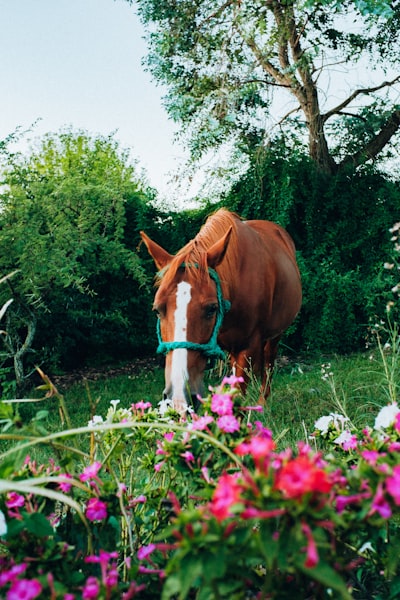
Cerro Torre Massif: The centerpiece of the region, the Cerro Torre massif is a dramatic and challenging mountain range that has captivated climbers and adventurers for decades. The jagged granite peaks, including the iconic Cerro Torre, offer breathtaking views and opportunities for technical climbing. Glaciar Torre: The Glaciar Torre is a stunning glacier that flows from the base of the Cerro Torre massif. Visitors can hike to viewpoints that offer panoramic vistas of the glacier and the surrounding mountains. The hike can be challenging, but the reward is well worth the effort. Laguna Torre: This serene glacial lake sits at the base of the Cerro Torre massif, offering a peaceful and picturesque setting for visitors. The lake's turquoise waters and the surrounding mountains create a stunning natural landscape. Fitz Roy Massif: While not technically within the Cerro Torre area, the Fitz Roy massif is a must-see attraction for visitors to the region. This iconic mountain range, with its distinctive granite peaks, is a popular destination for hikers and climbers. El Chaltén: The small town of El Chaltén serves as the gateway to the Cerro Torre and Fitz Roy regions. Visitors can explore the town's charming streets, enjoy local cuisine, and prepare for their outdoor adventures. Mirador de los Cóndores: This viewpoint offers stunning panoramic vistas of the Cerro Torre massif and the surrounding landscape. Visitors can spot the majestic Andean condors soaring above the peaks. Laguna de los Tres: This glacial lake, located at the base of Mount Fitz Roy, is a popular hiking destination. The hike to the lake is challenging but rewarding, with breathtaking views of the mountain and the surrounding glaciers. Piedras Blancas Glacier: This massive glacier, located near the town of El Chaltén, is a must-see attraction for visitors. Visitors can hike to viewpoints that offer stunning views of the glacier and the surrounding mountains. Río de las Vueltas: This scenic river flows through the Cerro Torre and Fitz Roy regions, offering opportunities for kayaking, rafting, and other water-based activities. Parque Nacional Los Glaciares: The Cerro Torre and Fitz Roy regions are part of the larger Parque Nacional Los Glaciares, a UNESCO World Heritage site that protects the stunning glacial landscapes of Patagonia.

Choquequirao Ruins: The main draw of Choquequirao is the impressive Inca ruins that sit atop a mountain ridge. Explore the well-preserved stone structures, plazas, and terraces that offer stunning views of the surrounding Vilcabamba mountain range. Marvel at the intricate stonework and imagine the bustling city that once occupied this remote location. Inca Terraces: Descend the steep stone staircases to discover the extensive agricultural terraces built by the Incas. These terraces were used for growing crops and showcase the Inca's advanced engineering and farming techniques. Wander through the terraces and imagine the vibrant community that once thrived in this high-altitude environment. Inti Watana: One of the most significant structures in Choquequirao is the Inti Watana, a ritual stone platform believed to have been used for astronomical observations and ceremonies. Stand in awe of this impressive stone monument and try to envision the important role it played in Inca culture and religious practices. Llama Corrals: Explore the well-preserved llama corrals, where the Incas housed and cared for these essential pack animals. Observe the intricate stone walls and imagine the bustling activity of the Inca caravans that would have passed through this remote outpost. Choquequirao Museum: Visit the on-site museum to learn more about the history, archaeology, and cultural significance of Choquequirao. Admire the artifacts, pottery, and textiles on display, which offer a glimpse into the daily life and traditions of the Inca people who once inhabited this site. Mirador Views: Hike to the various viewpoints and lookout points around Choquequirao to take in the breathtaking vistas of the surrounding Andes Mountains. Marvel at the sweeping panoramas of snow-capped peaks, deep valleys, and the winding Apurimac River below. Inca Trail Hike: For the adventurous traveler, consider hiking the Inca Trail from Choquequirao to the famous Machu Picchu. This challenging multi-day trek will take you through stunning Andean landscapes, past remote Inca ruins, and offer the opportunity to experience the legendary Inca Trail firsthand. Apurimac River Gorge: Descend into the deep Apurimac River gorge, which offers a unique perspective of the Choquequirao site and the surrounding natural beauty. Observe the powerful river cutting through the rugged terrain and keep an eye out for the diverse wildlife that inhabits this remote canyon. Andean Flora and Fauna: Explore the diverse Andean ecosystems surrounding Choquequirao, which are home to a wide variety of plant and animal life. Spot colorful birds, such as the Andean Condor, as well as other wildlife like the elusive Spectacled Bear. Local Culture: Engage with the local communities in the villages near Choquequirao to learn about their traditional way of life, customs, and connection to the Inca heritage. Visit local markets, try traditional Andean cuisine, and immerse yourself in the rich cultural tapestry of the region. Trekking and Hiking: Beyond the Choquequirao site, the surrounding Andes Mountains offer ample opportunities for trekking and hiking. Embark on day hikes or multi-day treks to explore remote valleys, glacial lakes, and other Inca ruins hidden in the rugged landscape. Stargazing: With its high-altitude location and minimal light pollution, Choquequirao offers exceptional stargazing opportunities. Gaze up at the vast, twinkling night sky and marvel at the clarity of the Milky Way and other celestial wonders. In conclusion, Choquequirao is a truly remarkable and awe-inspiring destination that offers a unique glimpse into the Inca civilization and the stunning natural beauty of the Andes Mountains. Whether you're exploring the well-preserved ruins, immersing yourself in the local culture, or embarking on adventurous treks, Choquequirao is a must-visit destination for any traveler to Peru.
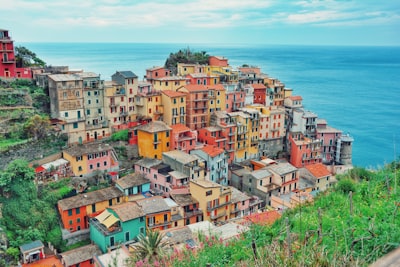
Riomaggiore Riomaggiore is the southernmost of the five villages that make up the Cinque Terre. This charming town is known for its colorful houses, narrow streets, and stunning seaside views. Visitors should explore the historic center, visit the Church of San Giovanni Battista, and take a stroll along the Via dell'Amore, a scenic coastal path that connects Riomaggiore to the neighboring town of Manarola. Manarola Manarola is a picturesque fishing village with a vibrant harbor and a charming town center. Visitors can hike the Sentiero Azzurro (Blue Trail) to enjoy breathtaking views of the town and the surrounding cliffs. The town is also known for its production of Sciacchetrà, a sweet, local wine. Corniglia Corniglia is the only village in the Cinque Terre that is not directly on the sea. Instead, it is perched atop a steep cliff, offering stunning panoramic views of the coastline. Visitors can climb the 377 steps, known as the Lardarina, to reach the town center and explore the narrow streets, charming piazzas, and the Church of San Pietro. Vernazza Vernazza is often considered the most beautiful of the Cinque Terre villages. This colorful town features a picturesque harbor, a medieval castle, and a charming town center with winding streets and lively piazzas. Visitors can hike to the Sanctuary of Our Lady of Reggio, which offers stunning views of the town and the surrounding coastline. Monterosso al Mare Monterosso al Mare is the largest of the Cinque Terre villages and the only one with a true sandy beach. Visitors can explore the historic center, visit the Church of San Giovanni Battista, and hike the Sentiero Azzurro to enjoy panoramic views of the coastline. The town is also known for its lemon-based cuisine and the production of Cinque Terre wine. In addition to the five villages, there are several other must-see attractions in the Cinque Terre region: The Cinque Terre National Park The Cinque Terre National Park is a UNESCO World Heritage Site that encompasses the five villages and the surrounding natural landscape. Visitors can hike the various trails that connect the villages, offering stunning views of the coastline and the Mediterranean Sea. The Sanctuary of Montenero The Sanctuary of Montenero is a historic religious site located above the town of Riomaggiore. Visitors can hike to the sanctuary to enjoy panoramic views of the Cinque Terre and the surrounding countryside. The Cinque Terre Vineyards The Cinque Terre region is known for its production of high-quality wines, including the famous Sciacchetrà. Visitors can explore the local vineyards and participate in wine tastings to learn more about the region's winemaking traditions. Overall, the Cinque Terre is a truly unique and captivating destination that offers a perfect blend of natural beauty, historic charm, and local culture. Whether you're hiking the scenic trails, exploring the charming villages, or indulging in the region's delicious cuisine and wine, there is something for everyone to enjoy in this stunning corner of Italy.
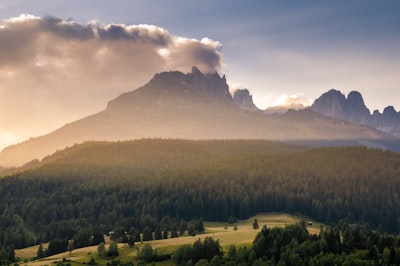
1. Tre Cime di Lavaredo: These iconic three peaks are one of the most famous landmarks in the Dolomites, offering stunning views and excellent hiking opportunities. 2. Lago di Braies: Also known as the "Pearl of the Dolomites," this picturesque lake is surrounded by towering mountains and is a popular spot for swimming, boating, and photography. 3. Seceda: This stunning ridge offers panoramic views of the Dolomites and is accessible via a cable car, making it a popular destination for both hikers and sightseers. 4. Cortina d'Ampezzo: This charming alpine town is a popular ski destination and also offers a variety of cultural attractions, including historic churches, museums, and shopping. 5. Marmolada: The "Queen of the Dolomites," this glacier-capped mountain is the highest peak in the range and offers opportunities for hiking, climbing, and skiing. 6. Alpe di Siusi: Europe's largest high-altitude alpine meadow, this area is known for its stunning landscapes, hiking trails, and traditional mountain huts. 7. Puez-Odle Nature Park: This protected natural area is home to a variety of wildlife and offers excellent hiking and trekking opportunities, with stunning views of the surrounding peaks.
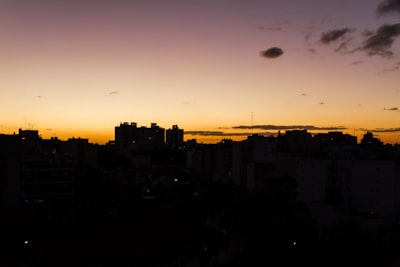
Fitz Roy Massif The Fitz Roy Massif is the crown jewel of El Chaltén, featuring towering granite peaks that rise over 3,400 meters (11,000 feet) into the sky. This iconic mountain range offers some of the best hiking and trekking in the region, with trails that lead to breathtaking viewpoints, glaciers, and alpine lakes. The most popular hike is the trek to Laguna de los Tres, which provides a stunning panoramic view of Fitz Roy and the surrounding peaks. Cerro Torre Cerro Torre is another must-see attraction in El Chaltén, a dramatic and technically challenging mountain that has captivated climbers and mountaineers from around the world. The hike to the base of Cerro Torre is a challenging but rewarding experience, offering stunning views of the mountain's sheer granite walls and the surrounding glaciers. Laguna Torre Laguna Torre is a beautiful glacial lake located at the base of Cerro Torre. The hike to the lake is a popular day trip from El Chaltén, offering stunning views of the mountain and the surrounding landscape. Along the way, you'll pass through forests, cross streams, and enjoy panoramic vistas of the Patagonian wilderness. Glaciar Piedras Blancas Glaciar Piedras Blancas is a massive glacier located just a short distance from El Chaltén. The hike to the glacier's viewpoint is a relatively easy and scenic walk, offering stunning views of the glacier's icy blue walls and the surrounding mountains. Laguna Capri Laguna Capri is a beautiful alpine lake located just a few kilometers from El Chaltén. The hike to the lake is a moderate one, with stunning views of the Fitz Roy Massif and the surrounding peaks. The lake itself is a serene and peaceful spot, perfect for a picnic or a moment of reflection. Mirador del Condor The Mirador del Condor is a viewpoint located high above El Chaltén, offering panoramic views of the town, the Fitz Roy Massif, and the surrounding Patagonian landscape. The hike to the viewpoint is a challenging one, but the reward is well worth the effort, with stunning vistas and the chance to spot the majestic Andean condor soaring overhead. Lago del Desierto Lago del Desierto is a stunning glacial lake located just a short drive from El Chaltén. The lake is surrounded by towering mountains and glaciers, and the hike along its shores offers breathtaking views of the Patagonian wilderness. Cascada de los Perros Cascada de los Perros is a beautiful waterfall located just a few kilometers from El Chaltén. The hike to the waterfall is a moderate one, with stunning views of the surrounding mountains and forests. Parque Nacional Los Glaciares El Chaltén is located within the boundaries of Parque Nacional Los Glaciares, a vast and stunning national park that is home to some of the most impressive glaciers and mountains in Patagonia. Visitors to the park can explore a variety of hiking trails, visit glaciers, and enjoy the incredible natural beauty of this UNESCO World Heritage site. Overall, El Chaltén is a true outdoor paradise, offering a wealth of natural wonders and adventure opportunities for travelers of all skill levels. Whether you're a seasoned hiker or a nature enthusiast, this incredible destination is sure to leave a lasting impression.
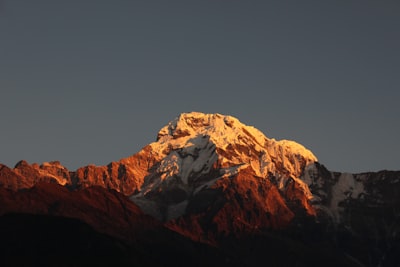
Everest Base Camp (5,364m/17,598ft) The ultimate destination for any trekker visiting the Everest region, Everest Base Camp offers breathtaking views of the world's highest mountain, Mount Everest, as well as the surrounding Himalayan peaks. Trekkers can explore the bustling base camp, visit the Khumbu Icefall, and soak in the incredible mountain scenery. Kala Patthar (5,643m/18,514ft) Considered one of the best viewpoints in the Everest region, Kala Patthar offers unparalleled panoramic views of Mount Everest, Nuptse, Changtse, and the Khumbu Glacier. The challenging hike to the summit is well worth the effort for the stunning vistas. Tengboche Monastery This iconic Buddhist monastery, situated at an altitude of 3,867m (12,687ft), is a significant cultural and spiritual site in the Everest region. Visitors can attend prayer ceremonies, explore the monastery's architecture, and enjoy the serene mountain setting. Namche Bazaar The vibrant Sherpa town of Namche Bazaar, often referred to as the "Gateway to Everest," is a hub for trekkers and mountaineers. Visitors can browse the local markets, visit the Sherpa Museum, and acclimatize to the high altitude. Gokyo Lakes The stunning Gokyo Lakes, a series of six glacial lakes, offer breathtaking scenery and the opportunity to explore the Gokyo Valley. Trekkers can hike to the top of Gokyo Ri (5,357m/17,575ft) for panoramic views of the Everest massif and the surrounding peaks. Ama Dablam Base Camp The base camp of the iconic Ama Dablam mountain (6,812m/22,349ft) is a popular destination for trekkers, offering stunning views of the mountain's distinctive ridgeline and the surrounding Himalayan landscape. Sagarmatha National Park This UNESCO World Heritage Site is home to a diverse array of flora and fauna, including the elusive snow leopard, Himalayan black bear, and the iconic Himalayan tahr. Trekkers can explore the park's trails and enjoy the breathtaking mountain scenery.

The Fairy Pools The Fairy Pools are a series of crystal-clear, turquoise-colored pools and waterfalls located at the foot of the Black Cuillins mountains. Visitors can take a leisurely hike along the banks of the pools, admiring the breathtaking scenery and the opportunity to spot local wildlife such as deer, otters, and a variety of bird species. Coire Lagan Coire Lagan is a dramatic glacial valley located just a short hike from the Fairy Pools. The valley offers stunning views of the surrounding mountains and is a popular destination for hikers and climbers. The area is also home to a number of smaller waterfalls and pools, providing ample opportunities for exploration and photography. Talisker Bay Talisker Bay is a beautiful sandy beach located just a few miles from the Fairy Pools. The bay is known for its dramatic cliffs, sea stacks, and the opportunity to spot seals, dolphins, and other marine life. Visitors can also explore the nearby Talisker Distillery, which offers tours and tastings of its renowned single malt whisky. Dunvegan Castle Dunvegan Castle is the ancestral home of the Clan MacLeod and is one of the oldest continuously inhabited castles in Scotland. The castle and its grounds offer a glimpse into the region's rich history and culture, with guided tours, gardens, and a museum showcasing the clan's artifacts and treasures. The Quiraing The Quiraing is a stunning natural landscape located on the Trotternish peninsula, just a short drive from the Fairy Pools. The area is known for its dramatic rock formations, including towering cliffs, pinnacles, and landslips, and offers breathtaking views of the surrounding countryside. The Old Man of Storr The Old Man of Storr is a iconic rock formation located on the Trotternish peninsula, just a short hike from the Fairy Pools. The formation, which resembles a giant, weathered figure, is a popular destination for hikers and photographers, offering stunning views of the surrounding landscape. Neist Point Lighthouse Neist Point Lighthouse is a historic lighthouse located on the westernmost point of the Isle of Skye. Visitors can hike to the lighthouse and enjoy panoramic views of the coastline, as well as the opportunity to spot seabirds and other marine life. Whether you're a nature lover, a history buff, or simply seeking breathtaking scenery, the Fairy Pools and the surrounding area of the Isle of Skye offer a wealth of must-see attractions that are sure to leave a lasting impression.

Milford Sound: Arguably the most famous of Fiordland's fiords, Milford Sound is a dramatic landscape of towering cliffs, cascading waterfalls, and abundant wildlife. Cruise through the serene waters and witness the awe-inspiring Mitre Peak, one of the most photographed mountains in New Zealand. Doubtful Sound: Larger and more remote than Milford Sound, Doubtful Sound offers a more tranquil and secluded experience. Explore the pristine waterways, spot bottlenose dolphins, and marvel at the untouched wilderness that surrounds you. Kepler Track: One of New Zealand's Great Walks, the Kepler Track is a stunning multi-day hike that showcases the diverse landscapes of Fiordland. Traverse through lush forests, alpine meadows, and along the shores of Lake Manapouri, with breathtaking views at every turn. Fiordland National Park Visitor Centre: Located in the town of Te Anau, the Fiordland National Park Visitor Centre is an excellent starting point to learn about the region's history, wildlife, and outdoor activities. Hollyford Track: For a more challenging hiking experience, the Hollyford Track offers a remote and rugged journey through ancient forests, glacial valleys, and along the Tasman Sea coast.











The Fairy Pools The Fairy Pools are a series of crystal-clear, turquoise-colored pools and waterfalls located at the foot of the Black Cuillins mountains. Visitors can take a leisurely hike along the banks of the pools, admiring the breathtaking scenery and the opportunity to spot local wildlife such as deer, otters, and a variety of bird species. Coire Lagan Coire Lagan is a dramatic glacial valley located just a short hike from the Fairy Pools. The valley offers stunning views of the surrounding mountains and is a popular destination for hikers and climbers. The area is also home to a number of smaller waterfalls and pools, providing ample opportunities for exploration and photography. Talisker Bay Talisker Bay is a beautiful sandy beach located just a few miles from the Fairy Pools. The bay is known for its dramatic cliffs, sea stacks, and the opportunity to spot seals, dolphins, and other marine life. Visitors can also explore the nearby Talisker Distillery, which offers tours and tastings of its renowned single malt whisky. Dunvegan Castle Dunvegan Castle is the ancestral home of the Clan MacLeod and is one of the oldest continuously inhabited castles in Scotland. The castle and its grounds offer a glimpse into the region's rich history and culture, with guided tours, gardens, and a museum showcasing the clan's artifacts and treasures. The Quiraing The Quiraing is a stunning natural landscape located on the Trotternish peninsula, just a short drive from the Fairy Pools. The area is known for its dramatic rock formations, including towering cliffs, pinnacles, and landslips, and offers breathtaking views of the surrounding countryside. The Old Man of Storr The Old Man of Storr is a iconic rock formation located on the Trotternish peninsula, just a short hike from the Fairy Pools. The formation, which resembles a giant, weathered figure, is a popular destination for hikers and photographers, offering stunning views of the surrounding landscape. Neist Point Lighthouse Neist Point Lighthouse is a historic lighthouse located on the westernmost point of the Isle of Skye. Visitors can hike to the lighthouse and enjoy panoramic views of the coastline, as well as the opportunity to spot seabirds and other marine life. Whether you're a nature lover, a history buff, or simply seeking breathtaking scenery, the Fairy Pools and the surrounding area of the Isle of Skye offer a wealth of must-see attractions that are sure to leave a lasting impression.

Choquequirao Ruins: The main draw of Choquequirao is the impressive Inca ruins that sit atop a mountain ridge. Explore the well-preserved stone structures, plazas, and terraces that offer stunning views of the surrounding Vilcabamba mountain range. Marvel at the intricate stonework and imagine the bustling city that once occupied this remote location. Inca Terraces: Descend the steep stone staircases to discover the extensive agricultural terraces built by the Incas. These terraces were used for growing crops and showcase the Inca's advanced engineering and farming techniques. Wander through the terraces and imagine the vibrant community that once thrived in this high-altitude environment. Inti Watana: One of the most significant structures in Choquequirao is the Inti Watana, a ritual stone platform believed to have been used for astronomical observations and ceremonies. Stand in awe of this impressive stone monument and try to envision the important role it played in Inca culture and religious practices. Llama Corrals: Explore the well-preserved llama corrals, where the Incas housed and cared for these essential pack animals. Observe the intricate stone walls and imagine the bustling activity of the Inca caravans that would have passed through this remote outpost. Choquequirao Museum: Visit the on-site museum to learn more about the history, archaeology, and cultural significance of Choquequirao. Admire the artifacts, pottery, and textiles on display, which offer a glimpse into the daily life and traditions of the Inca people who once inhabited this site. Mirador Views: Hike to the various viewpoints and lookout points around Choquequirao to take in the breathtaking vistas of the surrounding Andes Mountains. Marvel at the sweeping panoramas of snow-capped peaks, deep valleys, and the winding Apurimac River below. Inca Trail Hike: For the adventurous traveler, consider hiking the Inca Trail from Choquequirao to the famous Machu Picchu. This challenging multi-day trek will take you through stunning Andean landscapes, past remote Inca ruins, and offer the opportunity to experience the legendary Inca Trail firsthand. Apurimac River Gorge: Descend into the deep Apurimac River gorge, which offers a unique perspective of the Choquequirao site and the surrounding natural beauty. Observe the powerful river cutting through the rugged terrain and keep an eye out for the diverse wildlife that inhabits this remote canyon. Andean Flora and Fauna: Explore the diverse Andean ecosystems surrounding Choquequirao, which are home to a wide variety of plant and animal life. Spot colorful birds, such as the Andean Condor, as well as other wildlife like the elusive Spectacled Bear. Local Culture: Engage with the local communities in the villages near Choquequirao to learn about their traditional way of life, customs, and connection to the Inca heritage. Visit local markets, try traditional Andean cuisine, and immerse yourself in the rich cultural tapestry of the region. Trekking and Hiking: Beyond the Choquequirao site, the surrounding Andes Mountains offer ample opportunities for trekking and hiking. Embark on day hikes or multi-day treks to explore remote valleys, glacial lakes, and other Inca ruins hidden in the rugged landscape. Stargazing: With its high-altitude location and minimal light pollution, Choquequirao offers exceptional stargazing opportunities. Gaze up at the vast, twinkling night sky and marvel at the clarity of the Milky Way and other celestial wonders. In conclusion, Choquequirao is a truly remarkable and awe-inspiring destination that offers a unique glimpse into the Inca civilization and the stunning natural beauty of the Andes Mountains. Whether you're exploring the well-preserved ruins, immersing yourself in the local culture, or embarking on adventurous treks, Choquequirao is a must-visit destination for any traveler to Peru.

The Inca Trail to the top of Huayna Picchu is a challenging hike that takes approximately 2-3 hours to complete, but the panoramic vistas from the summit are well worth the effort. Along the way, hikers can explore the Temple of the Moon, a sacred Inca site located on the northern slope of the mountain. Another must-see attraction in the Machu Picchu area is the Inca Bridge, a narrow stone path that was once used as a secret entrance to the citadel. The bridge, which is perched precariously on the edge of a cliff, offers stunning views of the surrounding mountains and the Urubamba River below. For those seeking a more leisurely experience, the Machu Picchu Citadel itself is a captivating destination, with its well-preserved Inca ruins, terraced gardens, and the iconic Huayna Picchu in the background. Visitors can explore the various temples, plazas, and residential areas, and learn about the rich history and culture of the Inca civilization. In addition to the main attractions, the Machu Picchu area is home to a variety of other natural wonders, including the Inca Trail, the Inca Quarry, and the Inca Drawbridge. These sites offer opportunities for hiking, exploration, and a deeper understanding of the Inca's engineering and architectural achievements.

Machu Picchu The crown jewel of the Inca Trail, Machu Picchu is a UNESCO World Heritage Site and one of the New Seven Wonders of the World. This ancient Inca citadel, perched high in the Andes Mountains, offers stunning vistas of snow-capped peaks, lush valleys, and the winding Urubamba River. Visitors can explore the well-preserved ruins, including the Temple of the Sun, the Intihuatana Stone, and the iconic terraced structures. Inti Punku (Sun Gate) The Inti Punku, or Sun Gate, is the final checkpoint on the Inca Trail and the first glimpse of Machu Picchu for hikers. This ancient stone gateway offers a breathtaking panoramic view of the entire Machu Picchu complex, making it a must-visit spot for any Inca Trail trekker. Huayna Picchu Towering above Machu Picchu, Huayna Picchu is a steep, iconic mountain that offers stunning views of the ancient city and the surrounding landscape. The hike to the top of Huayna Picchu is challenging but rewarding, with opportunities to explore Inca ruins and terraces along the way. Inca Bridge The Inca Bridge is a remarkable engineering feat, built into the side of a cliff along the Inca Trail. This narrow, stone bridge was once used as a secret entrance to Machu Picchu, and it offers a unique and thrilling experience for hikers. Winay Wayna Winay Wayna is an Inca archaeological site located along the Inca Trail, just a few hours' hike from Machu Picchu. This well-preserved site features terraced agricultural gardens, ceremonial baths, and the remains of residential structures, providing a glimpse into the daily life of the Inca people. Runkurakay Runkurakay is an Inca ruin located at an elevation of over 12,500 feet, about halfway along the Inca Trail. This small, circular structure was likely used as a tambo, or way station, for Inca travelers and messengers. The site offers stunning views of the surrounding mountains and valleys. Sayacmarca Sayacmarca is an Inca archaeological site located on a steep, rocky outcrop along the Inca Trail. This well-preserved site features impressive stone structures, including a series of terraces, plazas, and residential buildings, and offers panoramic views of the surrounding landscape. Phuyupatamarca Phuyupatamarca, also known as the "Town Above the Clouds," is an Inca ruin located at an elevation of over 12,000 feet. This site features a series of stone structures, including a complex of baths and ceremonial platforms, and offers breathtaking views of the Andes Mountains and the Urubamba River. Intipata Intipata is an Inca agricultural terracing site located along the Inca Trail, just a short distance from Machu Picchu. This well-preserved site offers a glimpse into the Inca's sophisticated agricultural practices and the impressive engineering feats they accomplished in the rugged Andes Mountains. Wiñay Wayna Wiñay Wayna is an Inca archaeological site located just a few hours' hike from Machu Picchu. This site features a series of terraced agricultural gardens, ceremonial baths, and residential structures, providing a fascinating glimpse into the daily life of the Inca people.

Machu Picchu Ruins: The main attraction, of course, is the ancient Inca city of Machu Picchu itself. Explore the well-preserved ruins, including the iconic Temple of the Sun, the Intihuatana Stone, and the Royal Quarters, and marvel at the incredible engineering and architectural feats of the Inca civilization. Huayna Picchu: For the adventurous, the hike up to the top of Huayna Picchu, the iconic mountain that overlooks Machu Picchu, offers stunning panoramic views of the entire site. The hike is challenging but the reward is well worth it. Inca Trail: One of the most popular ways to reach Machu Picchu is by hiking the Inca Trail, a multi-day trek that takes you through stunning Andean landscapes, past ancient Inca ruins, and ultimately to the gates of Machu Picchu. The trail is a UNESCO World Heritage Site in its own right and a true bucket-list experience for many travelers. Intipunku (Sun Gate): Hike to the Sun Gate, the ancient Inca entrance to Machu Picchu, and witness the stunning sunrise over the ruins. This is a popular spot for photographers and a great way to start your day at the site. Machu Picchu Museum: Visit the Machu Picchu Museum in the nearby town of Aguas Calientes to learn more about the history, culture, and archaeology of the Inca civilization and the Machu Picchu site. Inca Bridge: Explore the Inca Bridge, a narrow stone path that was once used as a secret entrance to Machu Picchu, and marvel at the engineering prowess of the Inca people. Wayna Picchu Mountain: In addition to the hike up Huayna Picchu, consider the hike up Wayna Picchu Mountain, which offers stunning views of Machu Picchu and the surrounding landscape. Inca Trail Campsites: If you choose to hike the Inca Trail, be sure to explore the various campsites along the way, each with its own unique character and cultural significance. Ollantaytambo: Before or after your visit to Machu Picchu, explore the nearby town of Ollantaytambo, an important Inca archaeological site and a well-preserved example of Inca urban planning. Sacred Valley: The Sacred Valley of the Incas, located between Cusco and Machu Picchu, is a must-visit destination in its own right. Explore ancient Inca ruins, traditional Andean villages, and stunning natural landscapes. Pisac: Visit the Inca ruins of Pisac, which include an impressive agricultural terracing system and the remains of an ancient citadel. Moray: Discover the mysterious Inca ruins of Moray, a series of concentric terraces that were likely used for agricultural experimentation. Sacsayhuamán: Just outside of Cusco, the impressive Inca fortress of Sacsayhuamán is a testament to the engineering prowess of the Inca people. Cusco: Spend time in the historic city of Cusco, the former capital of the Inca Empire and a UNESCO World Heritage Site, to immerse yourself in the rich cultural heritage of the region. These are just a few of the must-see attractions in and around Machu Picchu. Whether you choose to hike the Inca Trail, explore the ancient ruins, or simply soak in the breathtaking natural beauty of the Andes, a visit to Machu Picchu is sure to be a truly unforgettable experience.

Trollstigen Viewpoint: The main attraction of Trollstigen is the stunning viewpoint that overlooks the winding road and the surrounding mountains. This is the perfect spot to take in the panoramic vistas and capture the iconic hairpin turns that make Trollstigen so famous. Stigrøra Viewpoint: Located just a short distance from the Trollstigen Viewpoint, Stigrøra offers another breathtaking perspective of the Trollstigen road and the surrounding landscape. This viewpoint is particularly stunning during the golden hour, when the light casts a warm glow over the mountains. Trollstigen Visitor Center: The Trollstigen Visitor Center is a modern and informative facility that provides visitors with a wealth of information about the history, geology, and ecology of the Trollstigen region. Visitors can explore interactive exhibits, watch educational videos, and learn about the challenges of building and maintaining this iconic road. Trollstigen National Tourist Route: The Trollstigen National Tourist Route is a 106-kilometer stretch of road that winds through some of Norway's most stunning natural landscapes. Along the way, travelers can stop at various viewpoints, hiking trails, and picnic areas to fully immerse themselves in the beauty of the region. Gudbrandsjuvet Gorge: Just a short drive from Trollstigen, the Gudbrandsjuvet Gorge is a natural wonder that is not to be missed. This deep, narrow gorge was carved out by the Valldøla River over thousands of years and offers visitors a unique and awe-inspiring perspective of the region's geology. Trollstigen Hiking Trails: For those who want to explore the Trollstigen region on foot, there are several hiking trails that offer stunning views and a closer connection to the natural environment. The Trollstigen Panorama Trail is a particularly popular option, offering a challenging but rewarding hike that takes visitors to the top of the Trollstigen road. Åndalsnes: The town of Åndalsnes, located at the base of the Trollstigen road, is a charming and picturesque destination in its own right. Visitors can explore the town's historic buildings, enjoy the local cuisine, and take in the stunning views of the surrounding mountains. Romsdalseggen Ridge: For the more adventurous traveler, the Romsdalseggen Ridge offers a challenging and rewarding hiking experience. This iconic ridge offers breathtaking views of the Romsdalen valley and the surrounding peaks, and is a must-visit for experienced hikers. Trollkirka Cave: The Trollkirka Cave, or "Troll Church," is a unique natural formation that is believed to have been created by trolls. Visitors can explore the cave's intricate rock formations and learn about the legends and folklore that surround this mysterious site. Trollstigen Waterfall: No visit to Trollstigen would be complete without seeing the iconic Trollstigen Waterfall. This majestic cascade of water cascades down the mountainside, offering a stunning visual display that is sure to leave a lasting impression on visitors.

Trolltunga (The Troll's Tongue) Trolltunga is the main attraction in the region, a dramatic rock formation that juts out over a 2,000-foot drop into the pristine Ringedalsvatnet lake. The hike to Trolltunga is challenging, but the panoramic views from the top are truly awe-inspiring. Visitors can take in the stunning landscape, snap photos, and experience the thrill of standing on the edge of this natural wonder. Ringedalsvatnet Lake Ringedalsvatnet is a breathtaking glacial lake that lies at the base of Trolltunga. Visitors can take a boat tour or kayak on the serene waters, surrounded by towering mountains and glaciers. The lake is a popular spot for swimming and fishing, and the surrounding trails offer excellent opportunities for hiking and exploring the natural beauty of the area. Skjeggedal Waterfall Located near the trailhead for Trolltunga, Skjeggedal Waterfall is a stunning natural attraction. The waterfall cascades down a steep cliff, creating a dramatic and picturesque scene. Visitors can hike to the base of the waterfall or take in the view from the nearby viewpoints. Kjeragbolten Kjeragbolten is a famous boulder wedged between two cliffs, offering a thrilling and unique experience for adventurous travelers. The hike to Kjeragbolten is challenging, but the views from the top are truly breathtaking. Visitors can stand on the boulder and take in the panoramic vistas of the surrounding mountains and fjords. Preikestolen (Pulpit Rock) Preikestolen, also known as Pulpit Rock, is another iconic natural attraction in the Ryfylke region. The flat-topped mountain plateau offers stunning views over the Lysefjord, and the hike to the top is a popular activity for visitors. Hikers can enjoy the scenic trail and the dramatic views from the edge of the plateau. Låtefossen Waterfall Låtefossen is a stunning double waterfall located in the Odda municipality. The waterfall cascades over a series of rocky cliffs, creating a dramatic and picturesque scene. Visitors can hike to the base of the waterfall or take in the view from the nearby viewpoints. Buarbreen Glacier Buarbreen is a magnificent glacier located in the Folgefonna National Park. Visitors can take a guided tour to explore the glacier, learning about its formation and the surrounding ecosystem. The hike to the glacier offers stunning views of the surrounding mountains and valleys. Folgefonna National Park Folgefonna National Park is a vast and diverse protected area that encompasses glaciers, mountains, and pristine wilderness. Visitors can explore the park's hiking trails, take in the stunning scenery, and learn about the local flora and fauna. The park is home to a variety of wildlife, including reindeer, foxes, and a variety of bird species. Odda The town of Odda is a popular base for visitors exploring the Trolltunga region. The town offers a range of accommodation options, restaurants, and amenities, as well as access to the nearby natural attractions. Visitors can explore the town's historic buildings, visit the local museums, and enjoy the lively cultural scene. Hardangerfjord The Hardangerfjord is a stunning fjord that stretches for over 100 miles, offering breathtaking views of the surrounding mountains and glaciers. Visitors can take a boat tour or drive along the scenic fjord road, stopping at picturesque villages and hiking trails along the way. In conclusion, Trolltunga and the surrounding region offer a wealth of natural wonders and outdoor adventures for visitors to explore. From the dramatic rock formations and glacial lakes to the cascading waterfalls and pristine wilderness, this destination is a true gem for nature lovers and adventure seekers alike.

Milford Sound: Arguably the most famous of Fiordland's fiords, Milford Sound is a dramatic landscape of towering cliffs, cascading waterfalls, and abundant wildlife. Cruise through the serene waters and witness the awe-inspiring Mitre Peak, one of the most photographed mountains in New Zealand. Doubtful Sound: Larger and more remote than Milford Sound, Doubtful Sound offers a more tranquil and secluded experience. Explore the pristine waterways, spot bottlenose dolphins, and marvel at the untouched wilderness that surrounds you. Kepler Track: One of New Zealand's Great Walks, the Kepler Track is a stunning multi-day hike that showcases the diverse landscapes of Fiordland. Traverse through lush forests, alpine meadows, and along the shores of Lake Manapouri, with breathtaking views at every turn. Fiordland National Park Visitor Centre: Located in the town of Te Anau, the Fiordland National Park Visitor Centre is an excellent starting point to learn about the region's history, wildlife, and outdoor activities. Hollyford Track: For a more challenging hiking experience, the Hollyford Track offers a remote and rugged journey through ancient forests, glacial valleys, and along the Tasman Sea coast.

Glade Wharf: The starting point of the Milford Track, Glade Wharf is a picturesque location where hikers embark on their journey. The serene waters of Lake Te Anau and the surrounding mountains create a stunning backdrop. Giant's Gate Waterfall: One of the highlights of the Milford Track, the Giant's Gate Waterfall is a magnificent cascade that plunges over 200 meters into a deep pool. Hikers can enjoy the sight and sound of this powerful natural wonder. Mackinnon Pass: Considered the most challenging and rewarding part of the Milford Track, the Mackinnon Pass offers panoramic views of the surrounding peaks and valleys. The ascent can be strenuous, but the breathtaking vistas make it well worth the effort. Sutherland Falls: At 580 meters, the Sutherland Falls are one of the highest uninterrupted waterfalls in the world. The hike to the base of the falls is a must-do for adventurous travelers, providing a truly awe-inspiring experience. Clinton River: The Clinton River, which flows through the heart of the Milford Track, is a serene and picturesque waterway. Hikers can enjoy the tranquil beauty of the river and its surrounding forests. Sandfly Point: The final destination of the Milford Track, Sandfly Point offers a stunning view of Milford Sound, one of New Zealand's most iconic natural wonders. Hikers can take in the majestic fjords, towering cliffs, and cascading waterfalls that make this region so renowned. Bowen Falls: Located within Milford Sound, the Bowen Falls are a magnificent waterfall that plunges over 500 meters into the fjord below. Visitors can admire the power and beauty of this natural wonder from various vantage points. Mitre Peak: Towering over Milford Sound, Mitre Peak is one of the most recognizable landmarks in New Zealand. Hikers can enjoy stunning views of this iconic mountain from various points along the Milford Track. Fiordland National Park: The Milford Track is situated within the vast and pristine Fiordland National Park, a UNESCO World Heritage Site. Hikers can explore the park's diverse ecosystems, including ancient forests, alpine meadows, and glacial valleys. Kea Parrot: The Kea, a large and intelligent parrot found only in New Zealand, is a common sight along the Milford Track. These curious birds are a delight to observe in their natural habitat.

1. Routeburn Flats: This stunning alpine meadow, nestled between towering peaks, is a popular starting point for the Routeburn Track. Hikers can enjoy the serene atmosphere and take in the panoramic views of the surrounding mountains. 2. Routeburn Falls: One of the highlights of the Routeburn Track, the Routeburn Falls are a series of cascading waterfalls that tumble down a steep, rocky gorge. The viewpoint offers a breathtaking perspective of this natural wonder. 3. Lake Mackenzie: Situated in a glacial basin, Lake Mackenzie is a stunning turquoise-colored lake surrounded by rugged mountains. Hikers can take a refreshing dip in the cool waters or simply admire the serene beauty of this alpine gem. 4. Earland Falls: This impressive waterfall, with its thundering flow and misty spray, is a must-see attraction along the Routeburn Track. The trail offers several viewpoints to appreciate the power and grace of this natural spectacle. 5. Key Summit: Reaching an elevation of 918 meters (3,010 feet), Key Summit offers panoramic vistas of the surrounding peaks, including the iconic Humboldt and Darran Mountains. The summit is a popular spot for hikers to take in the stunning alpine scenery. 6. Routeburn Shelter: This historic shelter, built in the 1930s, serves as a resting point and provides valuable information about the Routeburn Track and the surrounding environment. Hikers can learn about the region's rich natural and cultural heritage. 7. Routeburn Gorge: As the trail winds through the Routeburn Gorge, hikers are treated to breathtaking views of the steep, rugged canyon walls and the crystal-clear waters of the Routeburn River below. 8. Lake Howden: Nestled in a glacial basin, Lake Howden is a serene and picturesque body of water that reflects the surrounding mountains and forests. It's a peaceful spot to rest and take in the natural beauty. 9. Greenstone Valley: The Greenstone Valley, with its lush meadows and winding river, offers a tranquil and scenic respite along the Routeburn Track. Hikers can spot native wildlife and enjoy the serene atmosphere. 10. Glenorchy: Although not directly on the Routeburn Track, the charming town of Glenorchy is a popular starting and ending point for many Routeburn hikes. Visitors can explore the local shops, cafes, and stunning lakefront views. These must-see attractions along the Routeburn Track in New Zealand offer a diverse and awe-inspiring experience for outdoor enthusiasts. From cascading waterfalls and serene alpine lakes to panoramic viewpoints and historic shelters, this hiking trail truly showcases the breathtaking natural beauty of the Southern Alps.




